|
March 7, 2024
Stay informed! Here?s a summary of upcoming wildlife and habitat management activities and ways you can discover, explore and experience Minnesota?s outdoors.
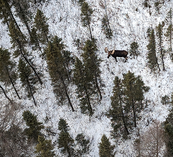
Stability in Minnesota?s moose population
Minnesota?s moose population has remained relatively stable for nearly a decade. The most recent population estimate is approximately 3,470 animals, according to the results of the Minnesota DNR?s 2024 population survey.
Results continue to suggest that after a steep decline from a population estimate of approximately 8,000 in 2009, Minnesota?s moose population appears to have stabilized and has fluctuated around 3,700 animals in recent years.
While estimates suggest continued stability in the population and reproductive success, Minnesota DNR researchers point out that Minnesota moose remain at risk given the long-term trends. Presently, the long-term survey trends indicate the moose population has declined approximately 60% since the mid-2000s.?Climate change, parasites, and predator impacts on calf survival all play a part in the long-term survival of the moose population.
Both the Fond du Lac Band of Lake Superior Chippewa and the 1854 Treaty Authority contributed funding and personnel for the 2024 annual survey. The survey is available on the Minnesota DNR?s moose management webpage.
|
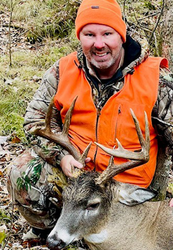
Deer season harvest report posted
Hunters harvested 158,678 deer during the 2023 hunting season, a lower total harvest than in recent years. Harvest was down 8% compared to the 2022 season and 14% less than the five-year average.
The greatest decreases were in the northern part of the state, where deer harvest compared to 2022 was 21% lower in the northeast region and 8% lower in the northwest region. Other regions saw smaller decreases in harvest, with 3% lower in central and southeast Minnesota, and 4% lower in southern Minnesota.
This past season was the first that crossbows were legal for all hunters to use. Archery license sales increased, with the majority being youth license sales ? more kids were able to participate in the archery season. Read more about this an access the report on the Minnesota DNR website.
Hubbard County public land buck by Bob Kaumans
|
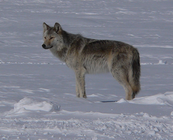
Wolves in Minnesota and Winter Deer Behavior webinars Q&A
Thank you to everyone who attended our Minnesota Outdoor Skills and Stewardship Series webinars on ?Wolves in Minnesota? or ?Winter Deer Behavior.?
We had an exceptional number of submitted questions during the webinar and due to time constraints our experts were unable to answer the majority during the live webinars. We greatly appreciated your engagement, and have pulled some of the most frequently asked questions from these webinar Q&As and sent out the responses to participants. If you?re interested in them, they?re also available online.
Wolf at Voyageurs National Park, courtesy of the National Park Service
|
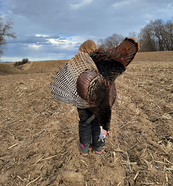
Turkey hunting licenses are on sale
Turkey hunters can now buy their licenses for the spring 2024 season. Licenses may be purchased online, by telephone at 888-665-4236 or in person wherever hunting and fishing licenses are sold. Hunters can hunt statewide and buy licenses for any time period (A-F) over the counter.
Hunters will be asked which permit area they plan to hunt, so hunters are advised to know that information when they buy their license. The Minnesota DNR will use this information for research purposes to help inform management of the state?s turkey population. Importantly, hunters who identify their permit area when purchasing their license will not be restricted to hunting in only that area.
Season dates and hunt rules can be found on the Minnesota DNR?s turkey hunting webpage. Permits for firearms hunters 18 and older to hunt the popular Carlos Avery and Mille Lacs wildlife management areas in the A-C time periods, and Whitewater WMA in the A-B time periods, were distributed already by lottery. The lottery application deadline was Feb. 16 and results are available on the turkey hunting webpage of the DNR website.
Best feeling ever photo courtesy of Jake Brady
|
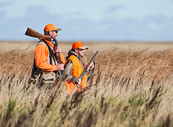
Landowners can sign up to enroll in the Walk-In Access program
Enrollment is open for Minnesota?s 2024 Walk-In Access program, which pays landowners to allow public hunting on private lands.
Since 2011, the Walk-In Access program has enrolled parcels of 40 acres or larger with high-quality natural cover. Land enrolled in conservation programs like the Conservation Reserve Program or Reinvest in Minnesota is preferred, but is not a requirement. Landowners can sign up for the program at their local soil and water conservation district office or by contacting Amber Knutson at 507-706-6172, and more information is available on the Minnesota DNR website.
With a $3 validation fee paid when purchasing a hunting license, hunters can access enrolled parcels, which are marked with highly visible signs posted by Minnesota DNR staff. Participating hunters can access Walk-In Access parcels Sept. 1 through May 31. Hunting laws are enforced by Minnesota DNR conservation officers. Landowners aren?t required to purchase additional liability insurance since enrolled lands are covered by recreational use laws under Minnesota state statute.
|

Check fire risk and burning restrictions
Extreme fire risk conditions have been reported in parts of the state this week.
For more information and daily updates on current fire risk and open burning restrictions, visit the statewide fire danger and burning restrictions page of the Minnesota DNR website. To receive email updates on current wildfire risk and open burning restrictions in Minnesota text ?FIRE? to 66468.
|
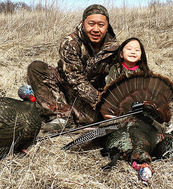
Wildfire season, youth archery program are the focus of DNR webinars??
The Minnesota DNR invites people interested in wildlife and outdoor skills to check out the spring program schedule for the Minnesota Outdoor Skills and Stewardship Series.
In a webinar on Wednesday, March 13, DNR staff will discuss how the DNR and partners plan for spring wildfire season, and how Minnesotans can plan and prepare at home and in their communities.
In a webinar on Wednesday, March 20, Kraig Kiger, DNR shooting sports specialist, and representatives from the National Archery in the Schools program, will discuss how to get started in the archery program, equipment needed, what?s available from the Minnesota DNR, competitions and awards for participants.
We also have an archive of past webinars that includes our most recent on turkey hunting with youth. Other webinars cover turkey calling techniques, turkey reintroduction and an overview of spring turkey hunting.
The webinars are free and offered year-round, though registration is required. Visit the Outdoor Skills and Stewardship webpage of the Minnesota DNR website for the registration portal, more information about upcoming webinars and recordings of past webinars.
|
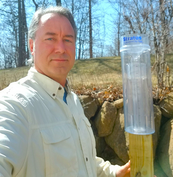
Volunteer to monitor rainfall
The Minnesota State Climatology Office is seeking rainfall monitors for the Community Collaborative Rain, Hail and Snow Network. The network includes more than 20,000 volunteers nationwide who measure precipitation in their backyards using a standard 4-inch diameter rain gauge.
Participants submit their precipitation reports online. The data from backyard rain gauges are a critical source of information and it?s beneficial to add more volunteer weather observers each year, even in areas where there are already volunteers. To sign up or for more information, visit CoCoRaHS.org or contact Luigi Romolo at [email protected].
|
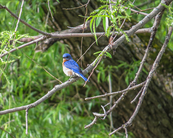
Wildlife highlight: eastern bluebirds
One of Minnesota?s most beloved songbirds is returning soon: the eastern bluebird!
Bluebirds are among the first spring migrants to return to Minnesota in search of potential nesting sites.
They nest from late March through early August, and will happily take advantage of nest boxes (they are cavity nesting birds).
Bluebirds can be attracted to bird feeders if you put out mealworms. They eat a wide range of insects and wild fruit. These birds prefer open woodlands, roadsides, farmlands, orchards, and occasionally suburbs and city parks.
Learn about bluebirds in Minnesota, and find plans for how you can build a bluebird house!
LeAnn Plinske, iNaturalist
|
|
